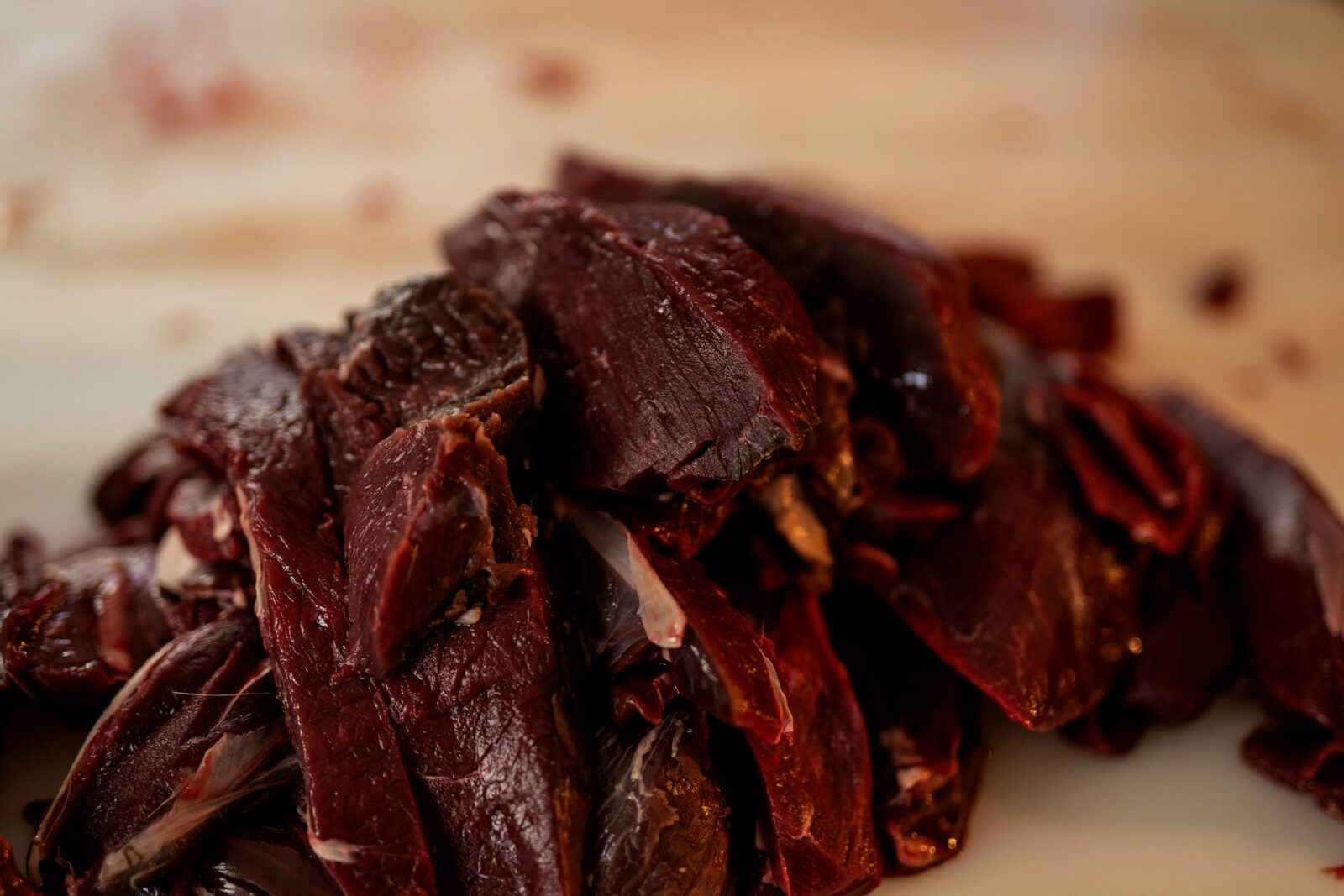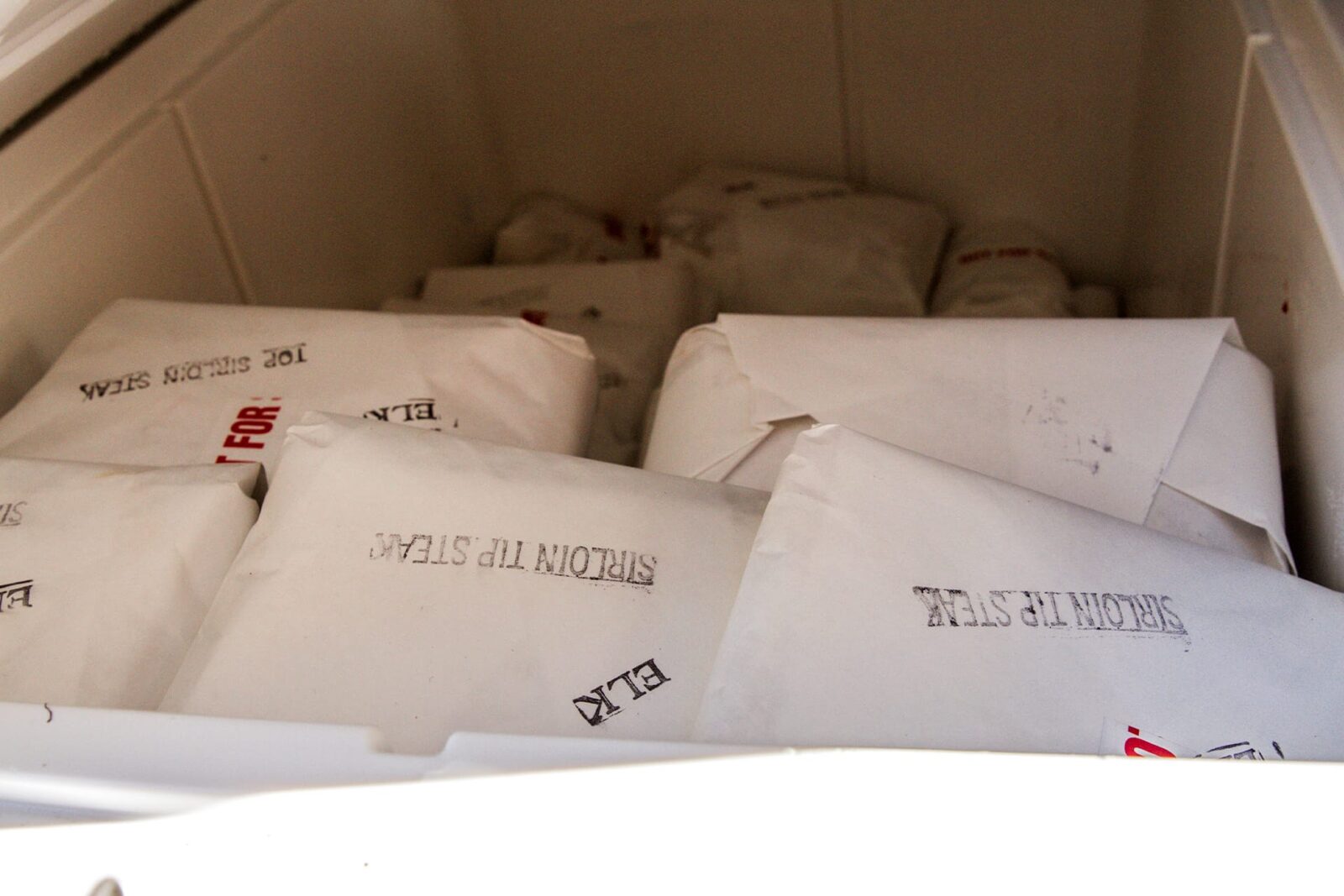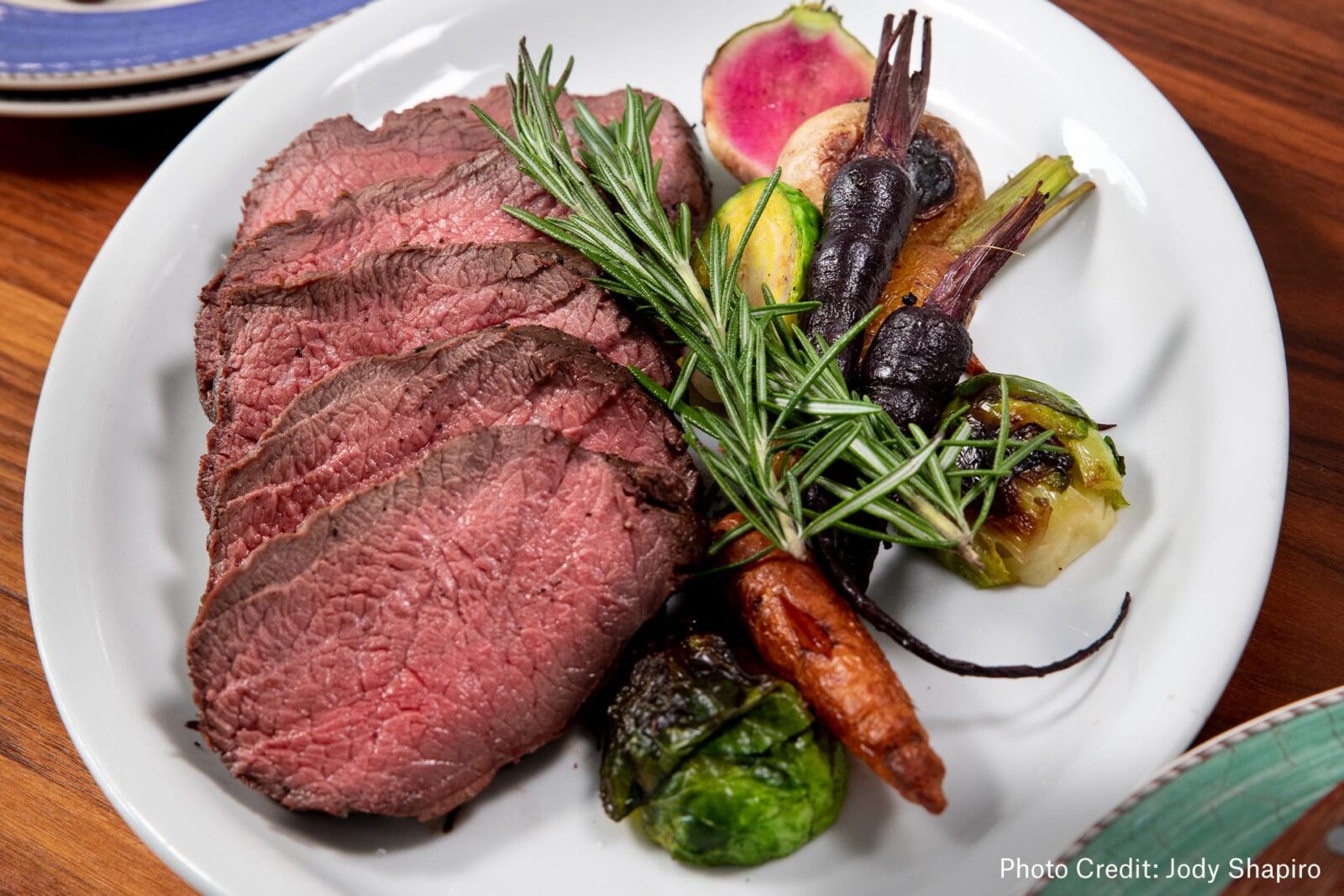Aging game enhances its flavor and texture, and it’s not as difficult as you might think.
The process of aging wild game meat, particularly venison, is simply giving meat enough time in a controlled environment to reduce its moisture content while allowing natural enzymes to break down connective tissue to tenderize it. Any attempt to dry age meat should be at the right temperature with the right humidity. Below we explain how it’s done, with insights and a recipe from Antler Kitchen & Bar’s owner and chef Michael Hunter.
“I’m not a food scientist but I can see what happens when we age meat in our kitchen,” says chef Michael Hunter. “For example, we’d get whole bison ribeyes from our supplier in Alberta and when they came in the meat looked like Jello on the counter. It was jiggly and it didn’t hold its shape. It had come straight from the slaughterhouse and I instantly thought, ‘I can’t use this.’”
Chef Hunter attempted to salvage this expensive cut of meat by wrapping it with butcher’s twine to give it some shape and putting it on aging racks in the fridge. Within two weeks it had firmed up.
“When you age meat, it loses moisture and becomes denser,” says Hunter. Research has shown that aging beef can reduce its weight by 10-30% depending on how long it’s aged. Freshly butchered beef is around 75% water. After 21 days, which is the minimum time most beef is aged in Canada where Hunter resides, beef loses around 10% of its weight due to moisture evaporation. “All of our beef in Canada, even in the most budget-friendly grocery stores, is aged for a minimum of 21 days.”
Venison is not commonly aged for a variety of reasons—the lack of space to hang an animal, warm temperatures, or because the harvest was taken to a local processor. But for those who can, a little bit of aging can go a long way to enhance flavor. And since venison is much leaner than beef you won’t need to age it for 21 days.

The Science Behind Aging Wild Game Meat
“The natural enzymes in the meat start to break it down,” says Hunter. “Essentially, the muscles are deteriorating, the meat becomes more tender, and its flavor becomes more concentrated. Then it’s a more enjoyable piece of meat.”
The aging process breaks down the collagen in the meat that was holding the muscle fibers together. After an animal is harvested, the “breaking-down” enzymes are still active and continue to work for about eight days, or until the meat is frozen or cooked.
The Right Environment for Aging Wild Game
Assuming it was reasonably cool when the animal was harvested so the meat can begin cooling right away, the aging process can begin by leaving the hide of the animal on and hanging it where the temperature stays between 33°F and 38°F, with the humidity around 65 to 75 percent. The humidity level is important because it allows the growth of desirable yeast and bacteria while simultaneously managing the rate of moisture reduction. If the meat is too moist for too long harmful bacteria grow; if the meat dries too quickly there isn’t time for its flavors to enhance.
In addition to temperature and humidity, air circulation is a critical part of the aging process. This will keep the meat free from harmful bacteria as moisture evaporates. While most home refrigerators have internal fans to provide some circulation, it generally is not enough for the aging process. Some hunters have dedicated fridges with larger or additional fans added. Some companies also sell dedicated at-home meat aging chambers, even ones that fit on countertops.

How To Age Wild Game at Home
If you’re interested in aging venison or other wild game at home there are a few ground rules. First, with venison you should not dry individual steaks or small cuts of meat. You’ll want to age the largest cuts you can, such as entire quarters or hanging the entire carcass with its hide on.
Second, there are some animals you do not want to age at home. Specifically, wild hog and bear meat spoil more quickly than other game meat because of their higher fat content, so they should not be aged. As omnivores, bears and wild hogs often carry the larvae of a nasty parasite, Trichina spiralis.
Other small game, especially upland birds and waterfowl, can be aged by simply hanging by beak or by feet with feathers and innards intact in a dedicated fridge for three to seven days at temperatures between 50-55 degrees Fahrenheit. Author and chef Hank Shaw provides a treatise on the process here.
For aging venison there are two methods: wet-aging and dry-aging. Wet-aging is achieved by placing the venison in a plastic bag under vacuum, and with this method there is no moisture loss but you get the benefit of the tissues breaking down.
Without the vacuum, exposed meat will develop a pellicle, which is a thin layer that develops on and darkens the outer part of the meat. Because venison has so little fat it tends to dry out the meat too much to be usable. However, it’s worth noting that some cooks will use the pellicle in stocks or grind it to add to other ground meats for enhanced flavors in burgers.
Dry-aging is storing meat in a temperature- and humidity-controlled environment, as discussed above, and preferably with its hide on. Deer lack the fat that cattle have, so aging it without the hide can dry it too much. One tip from Hunter is to take a hideless quarter and rub it with lard or dip it in beef tallow.
“If you do that and put it in the fridge it will harden around the outside,” he says. “I’ve even heard of people dipping cuts in beeswax or butter. But then at that point what you’re doing is a wet-age. Otherwise, if you don’t have the skin on and can’t coat it then you can likely get away aging it for three or four days before it dries out too much.”
With game meat, because it is much more lean than beef, the aging process doesn’t have to be 21 days, or even two weeks. “I try and hang a whole deer for at least a week,” says Hunter. “If I had to quarter an animal to get it out or debone it because you can’t fly back with bones, then I look to wet-age it, getting it into as large of bags as possible and aging it for one to two weeks. Wet-aging is probably what I prefer and do most of the game I harvest.”

Photo courtesy Jody Shapiro.
- 3 pounds dry-aged elk striploin (backstrap), inside round, or outside round
- 1 tablespoon kosher salt
- 1 1⁄2 teaspoons freshly cracked black pepper
- 1 tablespoon grapeseed oil or vegetable oil
- 1⁄2 pound Brussels sprouts, cut in half
- 1⁄2 pound radishes, cut in half
- 1⁄2 pound baby potatoes
- 1⁄2 pound shallots or pearl onions, peeled
- 1⁄2 pound heirloom carrots, peeled
- 1 bunch of fresh rosemary
- 4 bay leaves
- 1 tablespoon melted unsalted butter
- Optional garnish – Horseradish, Hot Mustard, or pan gravy made after roasting
- Preheat the oven to 325°F.
- Truss the roast with butcher twine and season with salt and pepper.
- Heat the grapeseed oil in a large cast-iron skillet over medium-high heat. Sear the meat on all sides, for 1 to 2 minutes per side.
- Remove the roast from the pan.
- Add to the hot pan, the Brussels sprouts, radishes, potatoes, shallots, carrots, rosemary, and bay leaves, and drizzle the melted butter over the vegetables.
- Place the elk on top of the vegetables and transfer to the oven. Cook until the internal temperature reaches 125°F for medium-rare doneness, 15 to 20 minutes.
- Remove the elk from the oven and continue roasting the vegetables until fork-tender. Discard the rosemary stems and bay leaves.
- Let the elk rest for at least 5 to 10 minutes before slicing. Cover with foil to keep warm.
- Slice thinly and season with flaked sea salt, and serve with the roasted vegetables and favorite roast accompaniments like horseradish hot mustard or pan gravy.